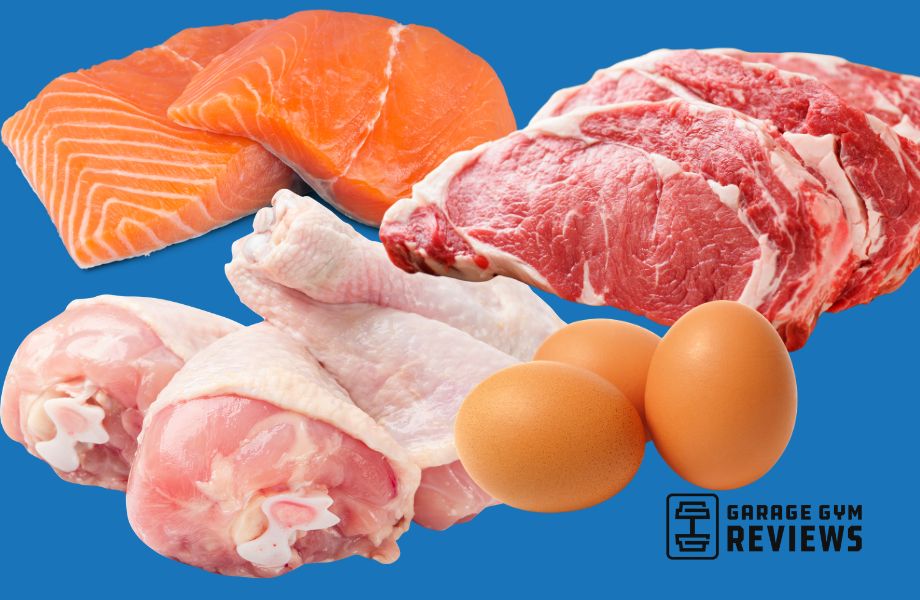We test and review fitness products based on an independent, multi-point methodology. If you use our links to purchase something, we may earn a commission. Read our disclosures.
Not a huge fan of vegetables? Here’s a diet that is totally vegetable-free: The carnivore diet. Your carnivore diet shopping list won’t contain fruit, vegetables, grains, or legumes. In fact, the acceptable carnivore diet food list is short and sweet: meat, eggs, and dairy.
You’ll eliminate carbohydrates completely from your diet and prepare meals from animal-based food, which includes red meat, poultry, eggs, fish, shellfish, and lactose-free dairy products. But I thought you said dairy is allowed? Kind of. More on this later.
In this guide to the carnivore diet food list, we’ll explain the key facts about this diet and why someone might want to try it.
Key Takeaways
- The carnivore diet consists of cutting carbs and only eating animal products.
- Search interest in the carnivore diet1 has nearly doubled in the past 18 months, with over 290,000 people searching for information on the diet each month.
- The carnivore diet is a high-protein and low-carb diet, which has been shown to reduce body weight and fat mass2.
- 95% of people who follow the carnivore diet do so for health reasons3.
- The carnivore diet prohibits eating fruits and vegetables, meaning your diet will have no fiber and limited amounts of vitamins and minerals.
- There’s not enough research available on the carnivore diet to prove its effectiveness.
RELATED: Best High-Protein, Low-Carb Foods
What Is the Carnivore Diet?
The carnivore diet is pretty much how it sounds: eat like a carnivore. It’s a menu of animal-based foods, including meat, eggs, fish, and some dairy. It’s also considered a type of ketogenic diet (aka keto diet) where a person consumes all of their calories from fats and proteins, and essentially little-to-no calories come from carbohydrates.
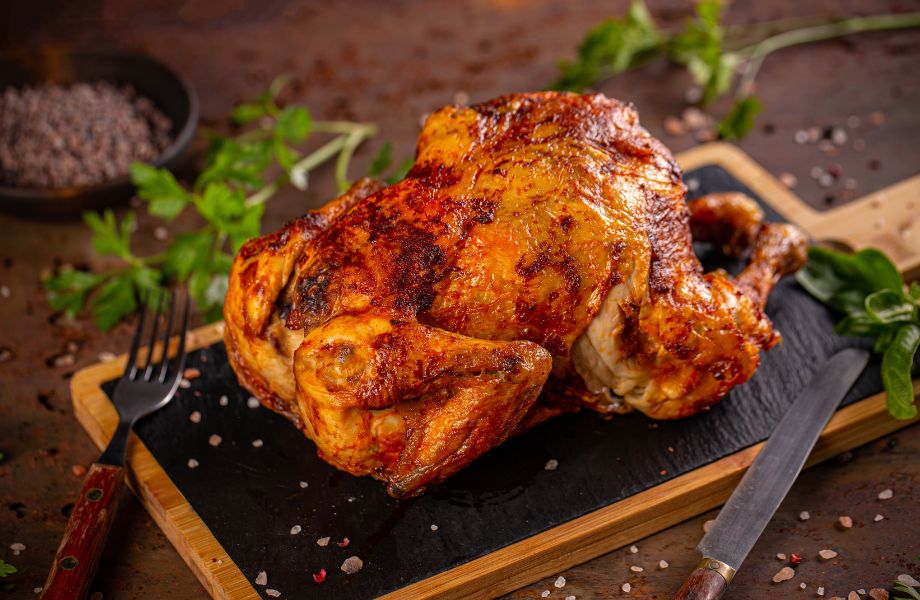
However, the keto diet is particularly high-fat and suggests a macronutrient breakdown of about 75% of calories from fat, 20% from protein, and 10% (or less) from carbohydrates. The keto diet also allows plant-based foods, particularly avocados, nuts, seeds, and other high-fat foods.
With the carnivore diet, there are no specific macro ratios4, with the exception of virtually zero carbohydrates, which is why this diet is often referred to as the “zero carb” diet.
Carbohydrates turn into glucose5, which is typically your body’s main energy source for both aerobic and anaerobic activity. However, when glucose is unavailable, ketone bodies6 are produced by your liver and used as an energy source instead of carbohydrates.
The idea behind a keto-style diet is that your body will run its energy stores on fat, which may lead to weight loss and other health benefits, such as reducing metabolic syndrome symptoms7 in folks with insulin resistance, prediabetes, and diabetes.
RELATED: A Beginner’s Guide to the Warrior Diet
What Can You Eat On The Carnivore Diet?
The carnivore diet allows you to eat animal-based foods, which are mostly meats but include animal fats, too. There are no rules about eating certain cuts of meat, whether it should be grass-fed or organic, or how to cook each meal.
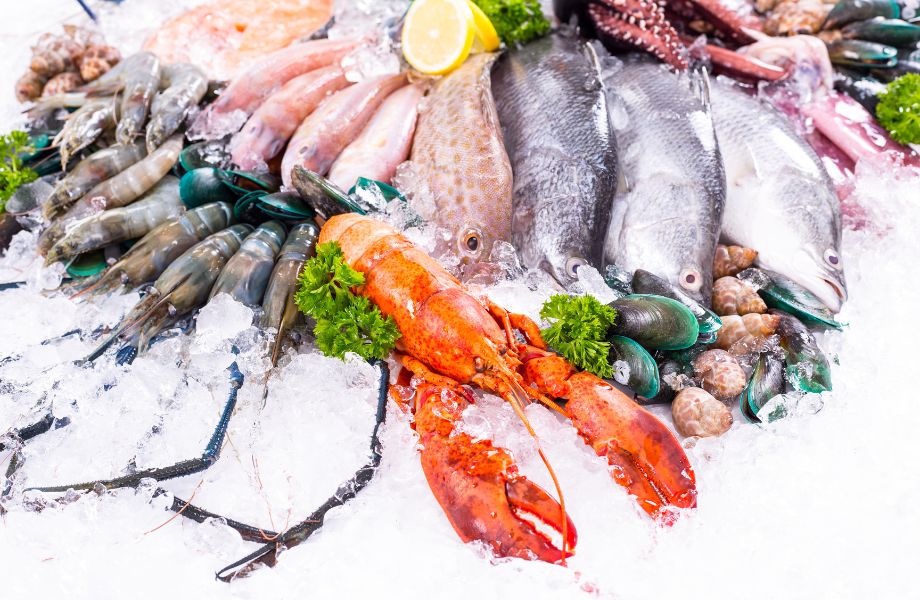
You can eat dried beef jerky or slow-roasted lamb chops. You can prepare animal products ranging from chicken liver and chicken thighs to ground beef and ribeyes.
You can cook eggs pretty much any way you want, including hard-boiled eggs or scrambled eggs, as long as cooking them in butter or ghee (clarified butter) versus vegetable or seed oil.
RELATED: What You Need to Know About the Egg Diet
Lactose-free dairy products are acceptable, because they are low or free from the natural sugars in cow’s milk. You can eat butter, ghee, heavy cream, and hard cheeses like parmesan or manchego. Additionally, seasonings free from carbs are acceptable like salt, pepper, chili, cumin, and paprika.
Let’s take a look what else you can eat:
Meat
- Beef
- Chicken
- Turkey
- Pork
- Lamb
- Wild or game meat
Fish
- Fresh or frozen fish: salmon, haddock, tilapia, tuna, etc.
- Canned fish: tuna, sardines, mackerel, anchovies, etc.
- Shellfish: scallops, clams, shrimp, crab, etc.
Organ Meats
- Liver
- Heart
- Kidney
- Intestines
- Tongue
Low-Lactose Dairy Products
- Hard cheeses: parmesan, manchego, etc.
- Heavy cream
- Butter
- Ghee
Other Animal-Based Products
- Eggs
- Lard
- Tallow
- Bone broth
- Bone marrow
What Can You Not Eat On The Carnivore Diet?
If you plan to adhere to the carnivore diet meal plan, you won’t consume any plant-based foods. This means no whole fruits and vegetables or foods made from grain flour (like baked goods, crackers, pasta, and bread, to name a few). It also means no sugar or sugar substitutes.
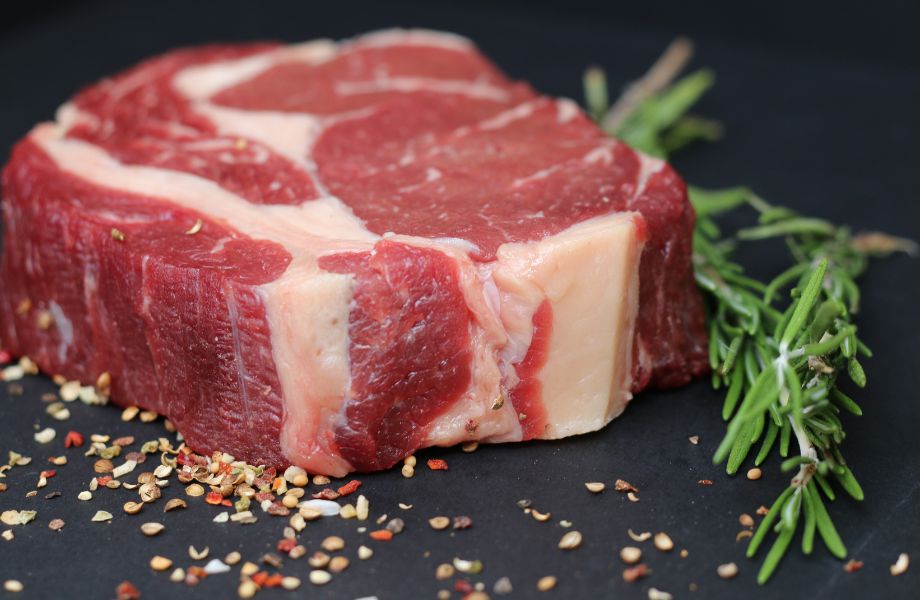
The other food group that is semi-off limits is dairy. Specifically, high-lactose dairy products like milk, yogurt, kefir, and soft cheeses like brie, feta, mozzarella, and cream cheese. However, lactose-free dairy products are OK on the carnivore diet.
Here’s a glance at the foods you should avoid on the carnivore diet:
- Vegetables
- Fruits
- Grains
- Nuts and seeds
- Legumes (black beans, chickpeas, lentils, etc.)
- High-lactose dairy (milk, yogurt, soft cheeses)
- Sugars (natural sugars, artificial sweeteners, candy, etc.)
- Beverages other than water
Benefits of The Carnivore Diet
While the keto diet has a fair amount of research to support weight loss and improving insulin resistance7, the carnivore diet doesn’t have a ton of researched-backed evidence to support its benefits.
The animal-based way of eating was made popular in 2019 by former orthopedic surgeon Shawn Baker, MD, after the release of his book, The Carnivore Diet. The book shares anecdotal success stories and boasts the following benefits:
- Weight and fat loss
- Muscle gain
- Ability to eat until satiated
- Staying full for longer
- Reducing insulin resistance and improving metabolism
- Reducing symptoms of certain autoimmune diseases
Who Should Try The Carnivore Diet?
While you can implement the carnivore diet to increase your overall protein intake, for many folks, it’s a little too extreme to cut out an entire macronutrient category. (No carbs, oh my!)
RELATED: What Should My Macros Be?
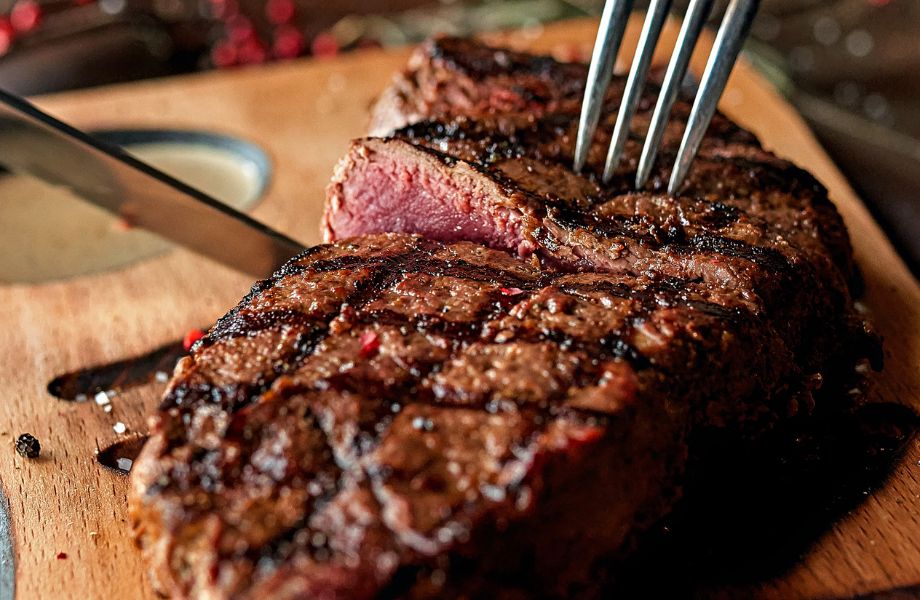
However, because food allergies and sensitivity are so prevalent, some dietitians and doctors use the carnivore diet as an elimination diet to address allergic reactions, skin issues, or autoimmune conditions3.
Additionally, the carnivore diet may positively effect weight loss, especially in folks with diabetes3. However, those with diabetes should consult their doctor before making drastic diet changes because the high fat from animal protein can increase low-density lipoprotein (LDL) cholesterol levels4 which may have negative effects on their overall health.
Who Should Not Follow The Carnivore Diet?
Because a diet chock-full of animal-based foods can potentially increase LDL4 cholesterol levels (aka your bad cholesterol), folks with heart disease, high blood pressure, and kidney disease should avoid following the carnivore diet.
People who are pregnant should also avoid the carnivore diet. One study found that a low-carb diet during pregnancy can increase the risk of neural tube defects8 due to the lack of folic acid in the diet.
Additionally, eliminating fruits and vegetables9 from your diet may reduce your consumption of essential nutrients, vitamins (like vitamins A, C, and K), minerals, and antioxidants. Fruits and vegetables are also recommended for their fiber content, which can help you with constipation and bowel regularity.
RELATED: High-Protein Diet Side Effects
Carnivore Diet Food List: Final Thoughts
The carnivore diet is not for the faint of heart. It pretty much wipes carbohydrates off the table and leaves you with animal-based proteins and fats. While animal-based foods are tasty, we know the limited carnivore diet food list may leave a lot to be desired at meal time.
If you’re interested in the potential benefits of the carnivore diet (like weight loss and improving metabolism), we suggest talking with your doctor or a registered dietitian to see if the carnivore meal plan is right for you.
Carnivore Diet Food List: FAQs
Is the carnivore diet an all meat diet?
The carnivore diet allows dieters to consume red meat, poultry, fish, shellfish, eggs, and lactose-free dairy products like butter, heavy cream, and hard cheeses. Fruits, vegetables, grains, and legumes aren’t on the approved carnivore diet food list.
Who should not try the carnivore diet?
Folks with high cholesterol should not try the carnivore diet because animal fat is higher in saturated fat than plant-based fat sources and can raise LDL4, which is your “bad” cholesterol. The carnivore diet and other low-carb diets are not recommended during pregnancy and can increase the risk of birth defects8.
Can the carnivore diet help you lose weight?
The carnivore diet may aid with weight loss, which is why many try it. However, dieters should be aware that the carnivore diet may lack essential nutrients like vitamins, minerals, and fiber.
What vegetables can you eat on a carnivore diet?
The carnivore diet does not include any vegetables, fruits, grains, or legumes.
Can I drink coffee on a carnivore diet?
Water is the only beverage allowed on the carnivore diet. However, some resources on the carnivore diet make exceptions for black coffee and coffee mixed with butter or ghee.
References
- Google. (2024). Google Trends. https://trends.google.com/trends/explore
- Moon, J., & Koh, G. (2020). Clinical Evidence and Mechanisms of High-Protein Diet-Induced Weight Loss. Journal of obesity & metabolic syndrome, 29(3), 166–173. https://doi.org/10.7570/jomes20028
- Lennerz, B. S., Mey, J. T., Henn, O. H., & Ludwig, D. S. (2021). Behavioral Characteristics and Self-Reported Health Status among 2029 Adults Consuming a “Carnivore Diet”. Current developments in nutrition, 5(12), nzab133. https://doi.org/10.1093/cdn/nzab133
- LeWine, H. E. (2024, May 8). What is the carnivore diet?. Harvard Health. Accessed October 8, 2024.
- Hantzidiamantis PJ, Awosika AO, Lappin SL. Physiology, Glucose. [Updated 2024 Apr 30]. In: StatPearls [Internet]. Treasure Island (FL): StatPearls Publishing; 2024 Jan-. Available from: https://www.ncbi.nlm.nih.gov/books/NBK545201/
- Laffel L. (1999). Ketone bodies: a review of physiology, pathophysiology and application of monitoring to diabetes. Diabetes/metabolism research and reviews, 15(6), 412–426. https://doi.org/10.1002/(sici)1520-7560(199911/12)15:6<412::aid-dmrr72>3.0.co;2-8
- Dowis, K., & Banga, S. (2021). The Potential Health Benefits of the Ketogenic Diet: A Narrative Review. Nutrients, 13(5), 1654. https://doi.org/10.3390/nu13051654
- Desrosiers, T. A., Siega-Riz, A. M., Mosley, B. S., Meyer, R. E., & National Birth Defects Prevention Study (2018). Low carbohydrate diets may increase risk of neural tube defects. Birth defects research, 110(11), 901–909. https://doi.org/10.1002/bdr2.1198
- Slavin, J. L., & Lloyd, B. (2012). Health benefits of fruits and vegetables. Advances in nutrition (Bethesda, Md.), 3(4), 506–516. https://doi.org/10.3945/an.112.002154
Further reading

Not a huge fan of vegetables? Here’s a diet that is totally vegetable-free: The carnivore diet. Your carnivore diet shopping list won’t contain fruit, vegetables, grains, or legumes. In fact, the acceptable carnivore diet food list is short and sweet: meat, eggs, and dairy. You’ll eliminate carbohydrates completely from your diet and prepare meals from animal-based food, which includes red meat, poultry, eggs, fish, shellfish, and lactose-free dairy products. But I thought you said dairy is allowed? » Read more about: The Carnivore Diet Food List: Everything You Should Now About this Protein-Heavy Diet » Read more

Looking for a smart rower that won’t break the bank? Check out our ProForm 750 R rower review to see if this one might fit the bill. Read more

Our Primal Greens review looks at the formulation, taste, and solubility of this popular greens powder from Primal Harvest. Read more

Not a huge fan of vegetables? Here’s a diet that is totally vegetable-free: The carnivore diet. Your carnivore diet shopping list won’t contain fruit, vegetables, grains, or legumes. In fact, the acceptable carnivore diet food list is short and sweet: meat, eggs, and dairy. You’ll eliminate carbohydrates completely from your diet and prepare meals from animal-based food, which includes red meat, poultry, eggs, fish, shellfish, and lactose-free dairy products. But I thought you said dairy is allowed? » Read more about: The Carnivore Diet Food List: Everything You Should Now About this Protein-Heavy Diet » Read more

